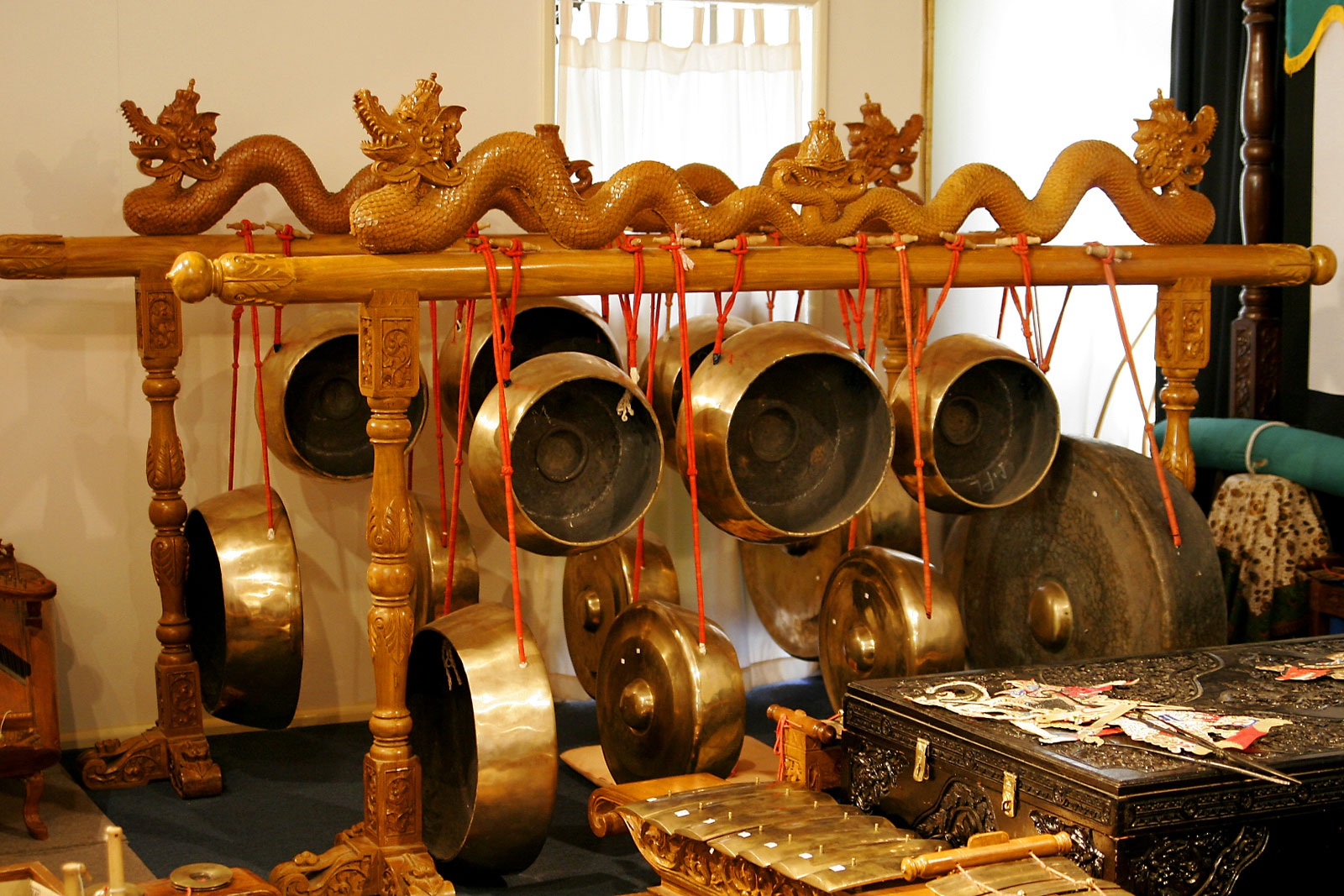Gong ageng
 Commonly, less expensive iron gong ageng or a slit-type gong are made to fulfill the role of the bronze gong, though at the loss of sound quality- for poorer regions and villages. The cost of expertly pure cast & beaten bronze has seen a rise in bronze-plated and bronze-laminated iron gongs created for the undiscerning expatriate.
Commonly, less expensive iron gong ageng or a slit-type gong are made to fulfill the role of the bronze gong, though at the loss of sound quality- for poorer regions and villages. The cost of expertly pure cast & beaten bronze has seen a rise in bronze-plated and bronze-laminated iron gongs created for the undiscerning expatriate.Traditionally, it is the 1st of the instruments to be made. A highly skilled gong-smith will smelt and cast, then supervises the hammering process, but will be solely responsible for the final fine tuning of the gong ageng pitch- the rest of the ensemble is tuned according to the qualities of the gong ageng. It is the single most costly and lengthy item to fabricate- and often requires multiple re-castings due to stress-cracks created in the beating process of forming it and undesired tonal or timbre qualities. The pitch desired is very deep, distinctly pitched rumble that sound like thunder or the "rolling waves of the sea". Slight differences in the opposite halves of a gong create a desired "beating" in the sound. It is named according to subjective poetic descriptive images for different speeds of beats, comparing slow beats with waves of water and faster beats with Bima’s laughter (Bima is one of the Pandawa brothers in the Mahabharata epic).
Gong ageng demarcates the larger phrase structure or gongan. Within the gongan' structure, Between, the gong suwukan and kempul punctuate the subdivisions of time. A gongan is the time span between the gong ageng strikes, which are subordinate to the tempo: irama, and length of the structure. the gongan is the longest time-span in the colotomic structure of gamelan.
In larger gendhing, only the gong ageng is employed. Some gamelan sets for cost considerations will use the gong ageng for both pxlog and slxndro scale systems. A truly full set in a keraton(palace) will have two gong ageng.
The gong suwukan or gong siyem is the smaller gong in the set used for smaller phrases. It is generally pitched higher, and at different pitches for pxlog and slxndro. Frequently gamelans will have more than one gong suwukan, for different ending notes, and different pathet.
Most common is a 1 for pathet sanga and lima, and 2 for pxlog pathet nem and barang, and slxndro pathet nem and manyura. Usually a 1 can be played for gatra ending in 1 or 5, and a 2 for 2 or 6. A few gamelans include a gong suwukan 3 as well.
The goong ageung plays a similar role in Sundanese gamelan. The kempur in Balinese gamelan is similar to the gong suwukan (and not to be confused with the Javanese kempul). In other Indonesian and Philippine cultures, its analog is the agung.
On auspicious or important occasions a gong ageng is often struck, just as in Western society a ribbon may be cut or a champagne bottle smashed.
In the houses of the wealthy, mainly Javanese aristocrat families of Jakarta, gong ageng are used to herald the arrival of guests. Less important guests are heralded by the kempul.
Related Sites for Gong ageng
- Virtual Instrument Museum - Wesleyan University read Gong ageng
- The Javanese Gamelan Instruments - University of Wisconsinâ€"Madison read Gong ageng

No comments:
Post a Comment